Habitats: Brown bears live in a wide variety of habitats. They occur in temperate rainforests at sea level in southern British Columbia, Canada; at the other extreme, they inhabit high, dry plateaus and deserts of central Asia, and alpine habitats in the Himalayas. In general, brown bears are found throughout the temperate to subarctic portion of the Northern Hemisphere wherever human density is low. The exception is the boreal forest of central and eastern Canada, where black bears are numerous and brown bears are absent. (Although there is evidence that brown bears occupied the boreal forests and tundra of the Ungava Peninsula of northern Quebec and Labrador until the early 1900s). On average brown bears prefer a portion of their habitats to be open and non-forested, in contrast to American black bears, which are usually confined to more forested habitats.
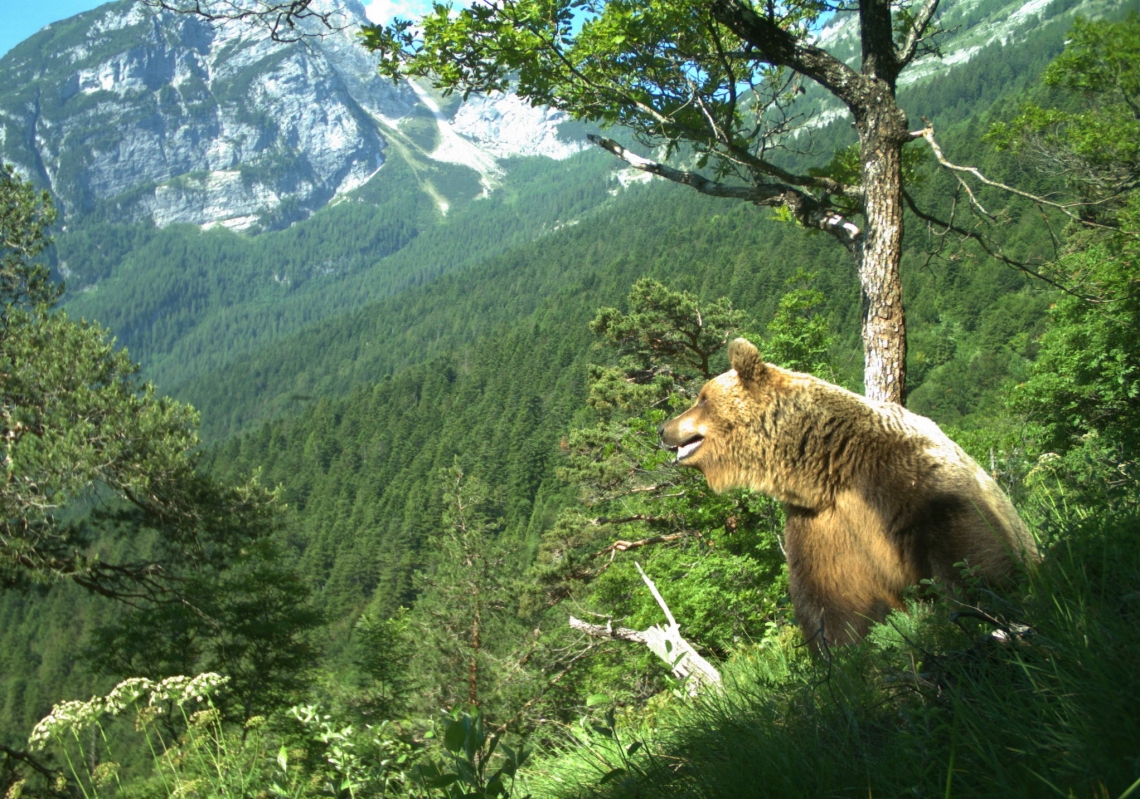
Bown bear_U arctos_Trentino Italian Alps_camera trap mountainous habitat_M Zeni
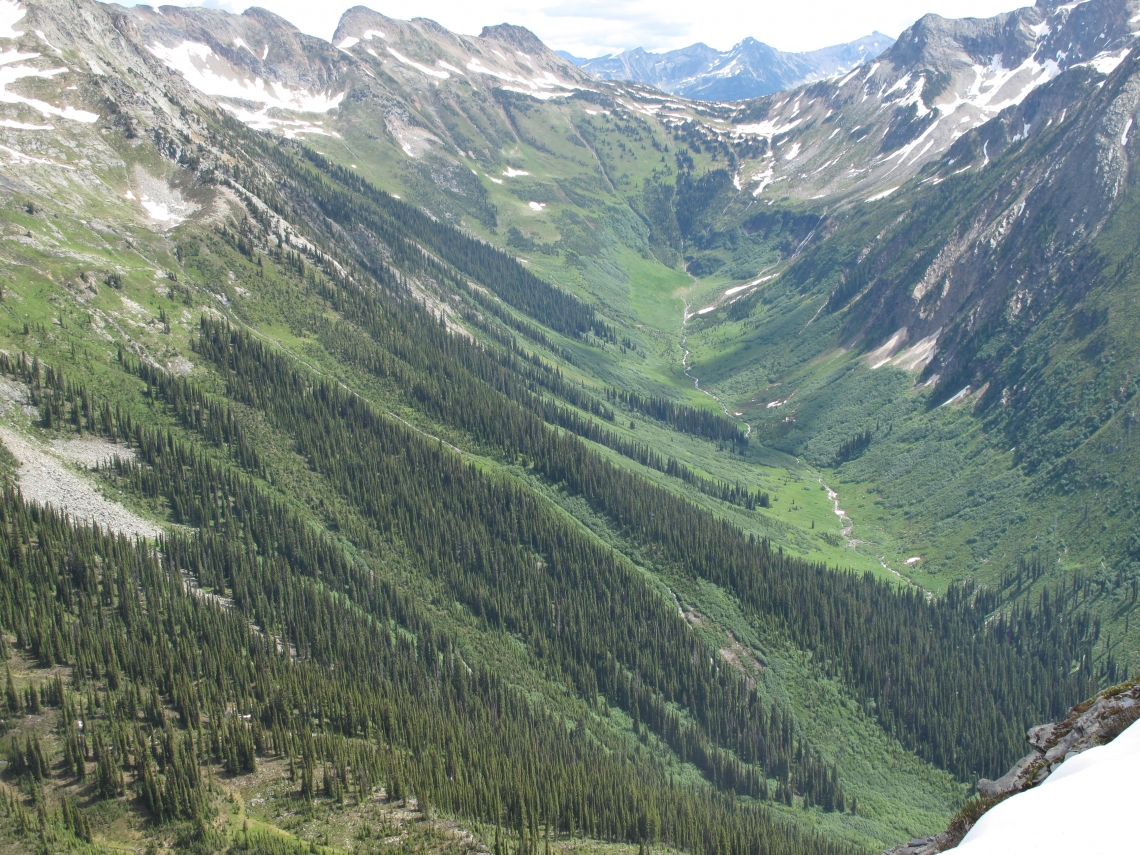
Brown bear_U arctos_British Columbia Canada_excellent spring mountian habitat_M Proctor
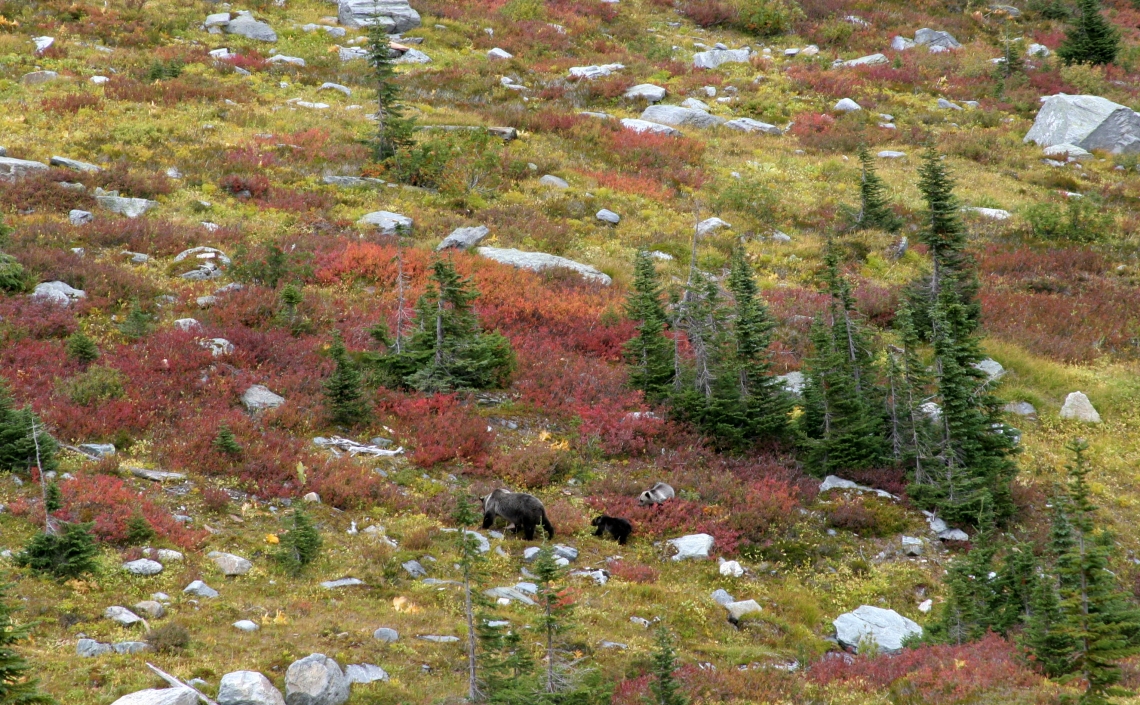
Brown bear_U arctos_British Columbia Canada_bear family feeding in excellent huckleberry habitat_G. MacHutchon
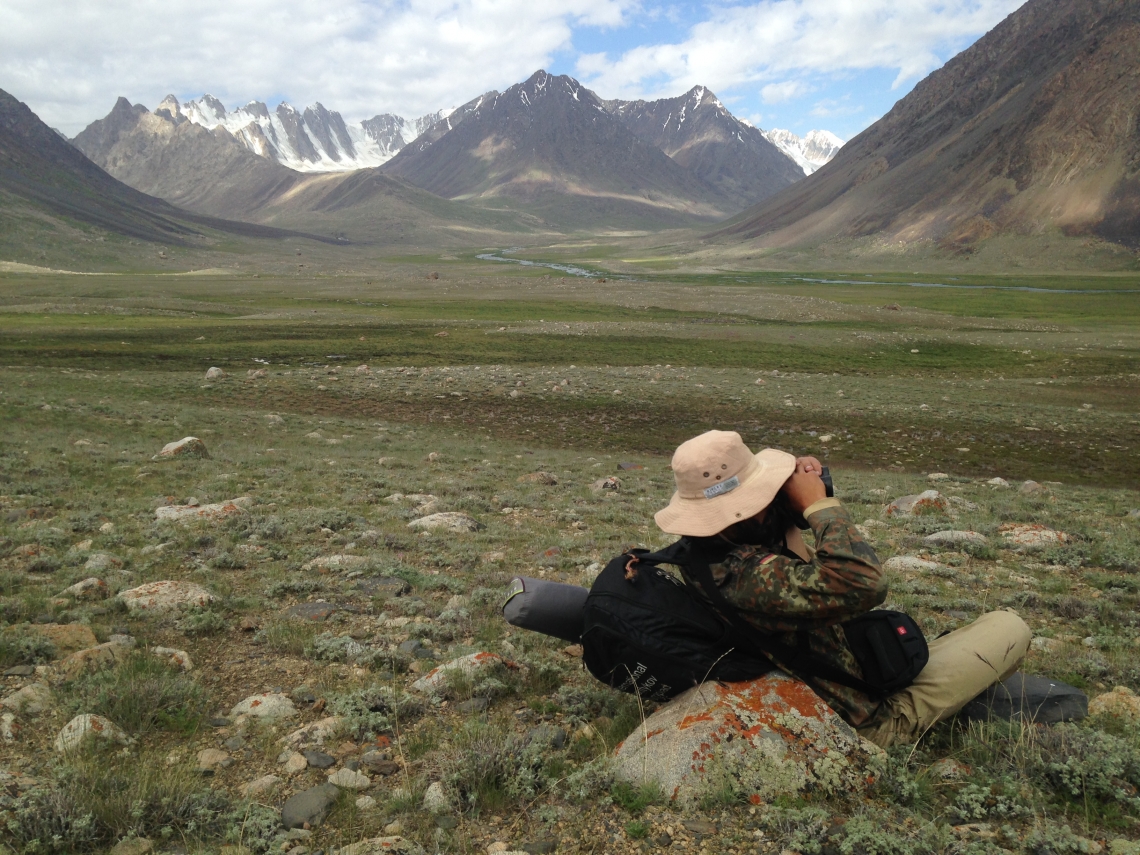
Brown bear_U arctos_Tajikistan Central Asia_high elevation brown bear habitat_K. Karimov

Brown bear_U arctos_Northern Tien-Shan Mountains central Asia_typical bear habitat of Tien Shan Mts_M Bespalov
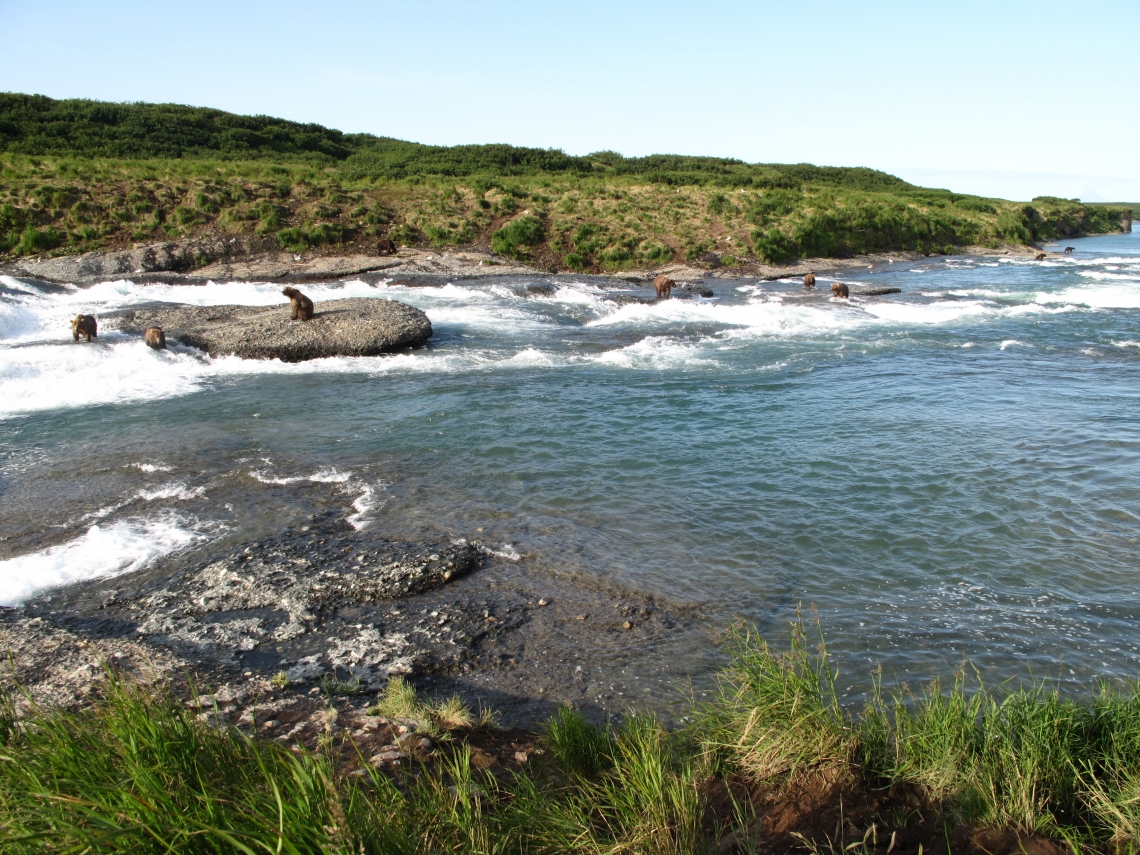
Brown bear_U actos_McNeil River Falls Alaska_salmon bearing river habitat_M Proctor
Diet: Across their distribution, brown bears consume a huge variety of foods from both plants (grasses, shoots, young leaves, roots, fruits, and nuts) and animals (insects, fish, small and large mammals). As a species, their diet is most diverse among the bears, but is adapted to specific seasons and locales, ranging from nearly entirely herbivorous in some areas to near obligate carnivory. In coastal areas of western North America and eastern Asia including Hokkaido, Japan, and Kamchatka, Russia, salmon are particularly important. Small mammals such as ground squirrels, pika or marmots can dominate diets in high latitudes or elevations of North America, the Himalayas, and the Tibetan Plateau. Ungulates, mostly newborn, but also adults, are important foods in portions of interior Alaska, northern Canada, and Yellowstone National Park in the western U.S. In Glacier National Park and the Yellowstone area some bears feed on dense congregations of army cutworm moths. In Boreal forests, they rely on ants. Acorns from oaks can be an important high-energy plant food in in some European countries and Hokkaido. In many areas of Alaska, Canada, Scandinavia, and Russia, berries often dominate diets in the summer and fall. Most important foods are usually those that enable them to deposit large amounts of fat needed for hibernation and cub production.
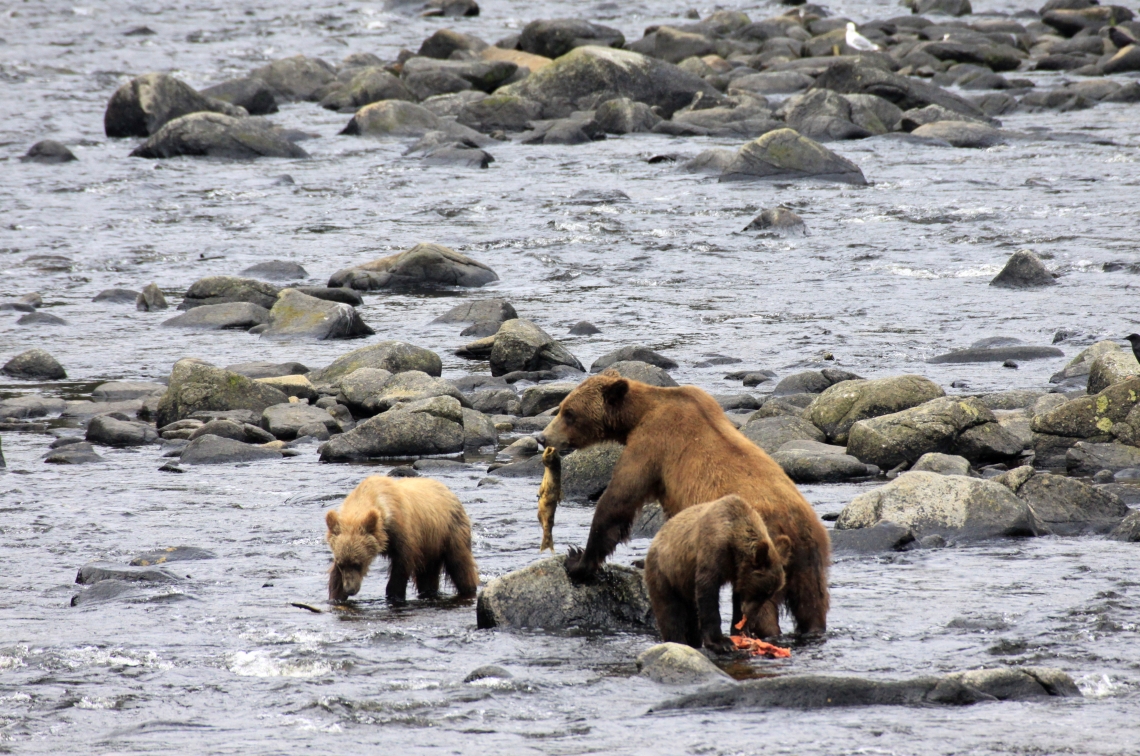
Brown bear, U arctos_west coast British Columbia Canada_family fishing for salmon_G. MacHutchon

Brown bear_U arctos_east coast Russia_feeding on salmon_I Seryodkin
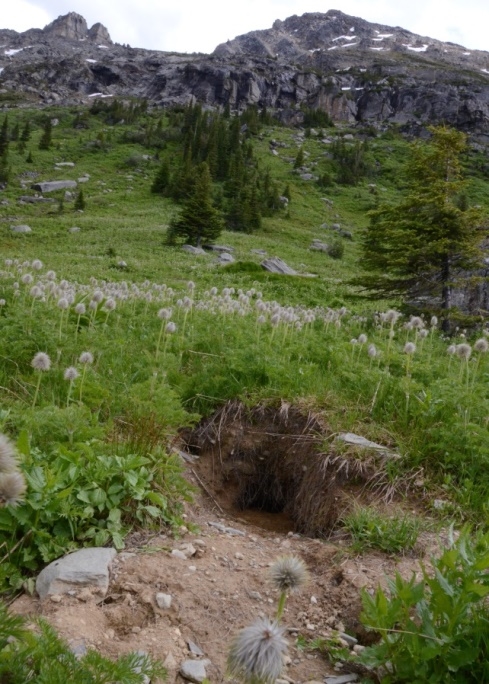
Brown bear_Ursus arctos_southern British Columbia Canada_bear dig for ground squirrels a favorite food_M Proctor
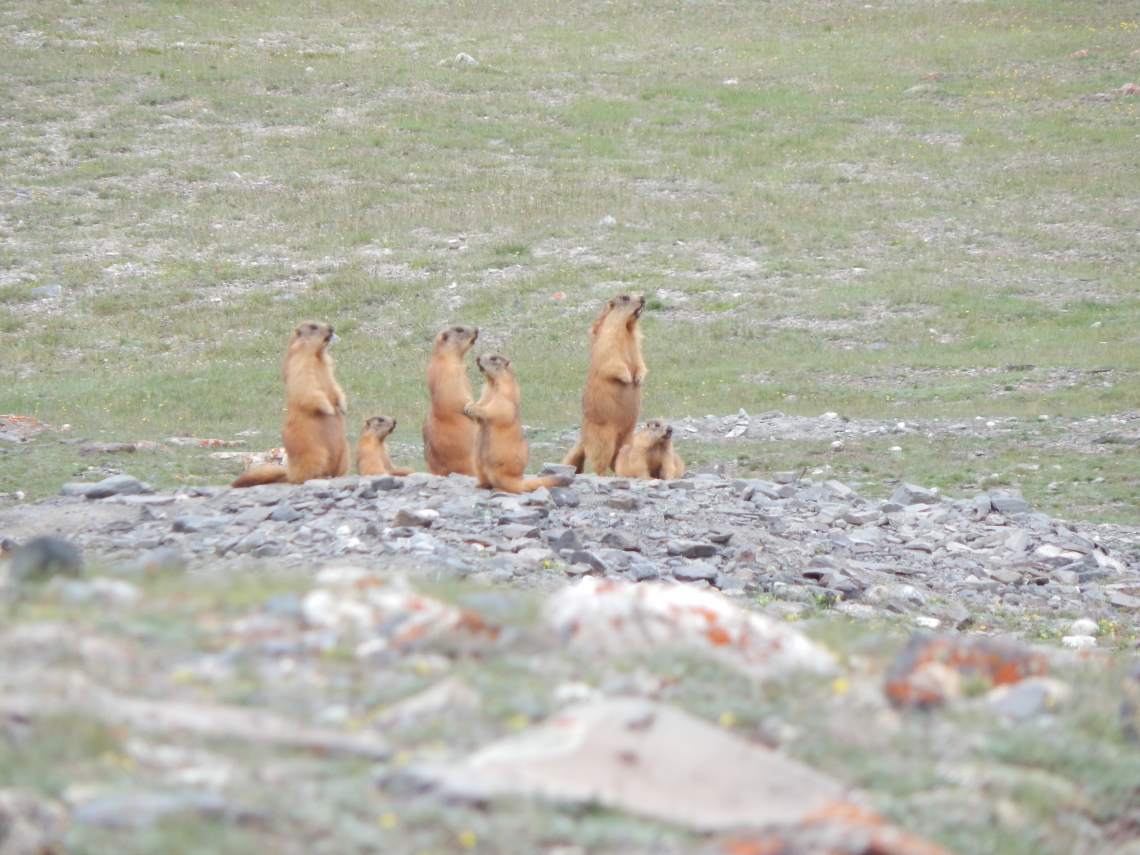
Brown bear_U arctos_Tajikistan Central Asia_Ground squirrels a favorite bear food_K Karimov
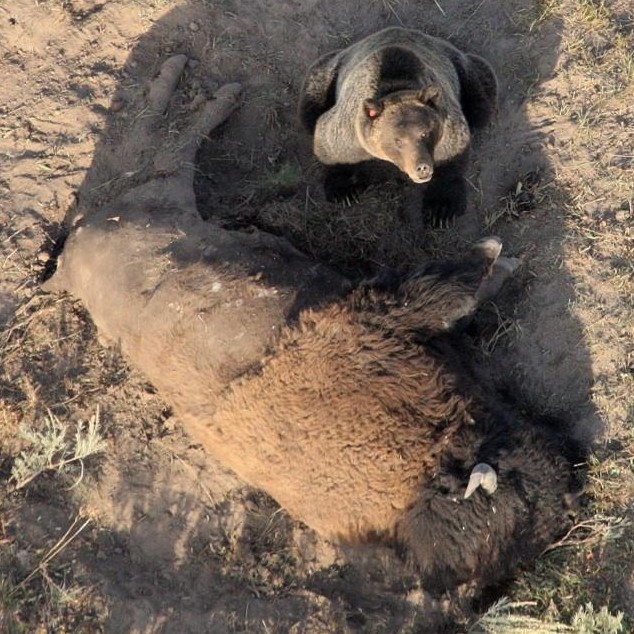
Brown bear_U. arctos_Yellowstone National Park USA_ protecting a dead bison before feeding_D. Smith
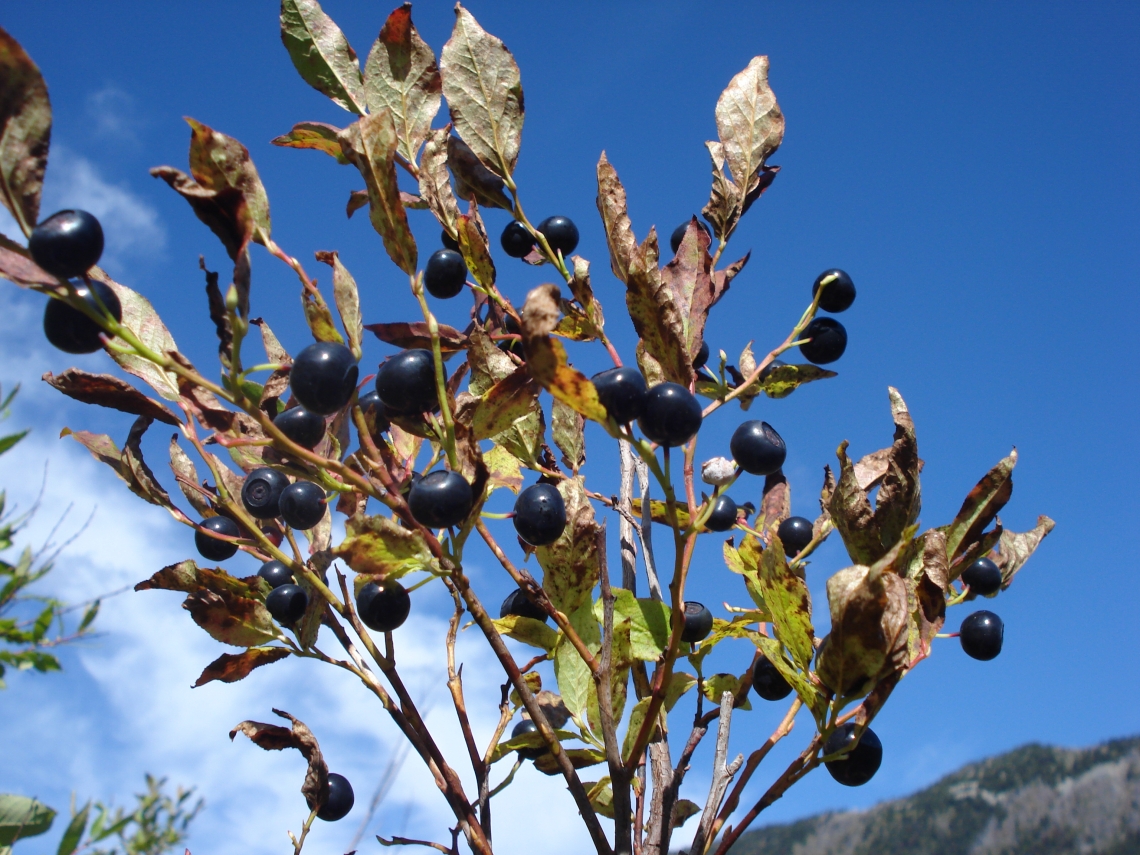
Brown bear_U arctos_western Canada_Berry laden huckleberry bush Vaccinium membranaceum a brown bear favorite_B McLellan
Hibernation: Brown bears hibernate across their range, but there are reports of some bears staying active during winter in parts of coastal Alaska, Canada, Greece, Poland and the Ukraine. Usually brown bears hibernate in dens they excavate but natural caves are also used when available. Females usually enter dens in late October through November, depending on latitude, snow cover, and food availability. Males enter dens a few weeks later than females. Males emerge earlier, usually in late March or early April; females emerge mid-April to mid-May, but mothers with new cubs may remain till late May (or even as late as early July in caves on steep cliffs). Brown bear hibernation seems to be initiated primarily by environmental cues (falling ambient temperature, snowfall, and a lack of available food), but terminated by physiological cues (rising body temperatures over the last 2 months of hibernation). During hibernation, bears (including lactating females) do not eat or drink. Less is known about hibernation in brown bears than American black bears because, except for a study in Scandinavia, researchers do not visit dens of radio-collared brown bears due to the risk of being attacked (American black bears, in contrast, have not attacked any researchers visiting their dens).
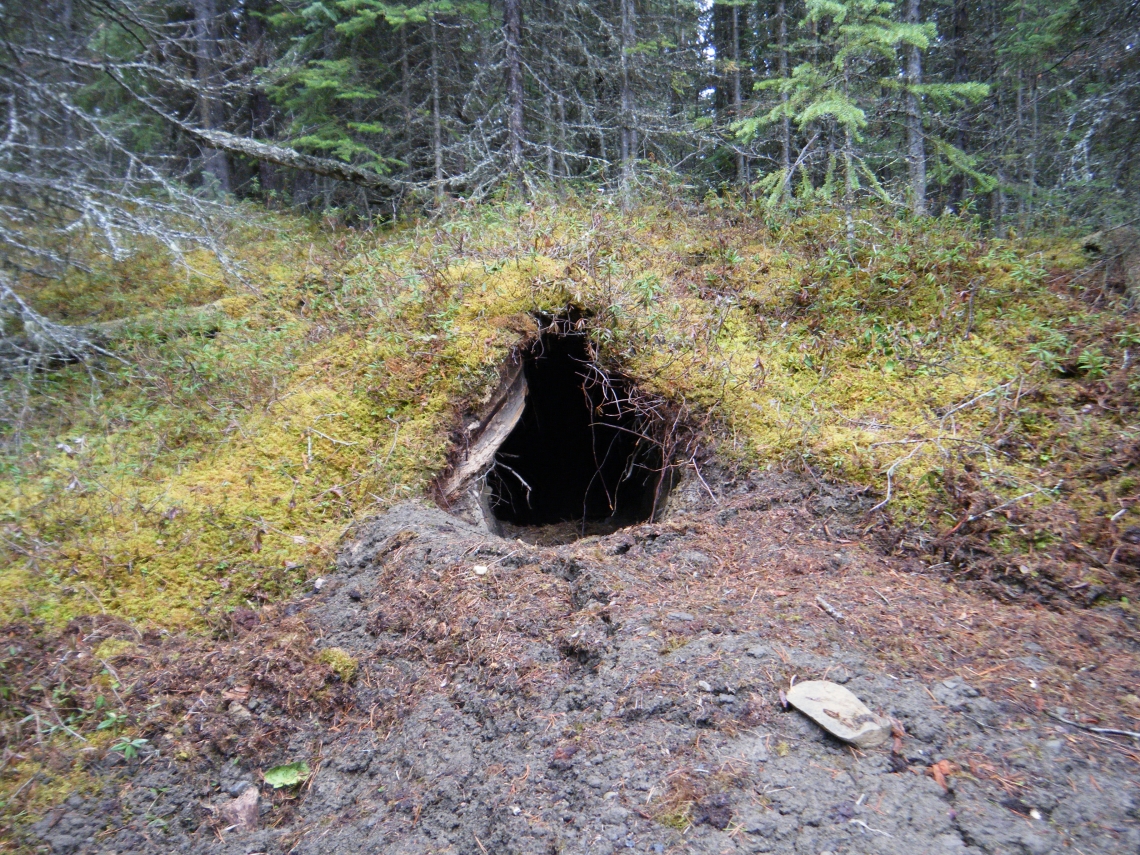
Brown bear_U arctos_Alberta Canada_hibernation den_K Pigeon

Brown bear_U arctos_Alberta Canada_hibernation den_K Pigeon

Brown bear_U arctos_Alberta Canada_hibernation den_K Pigeon
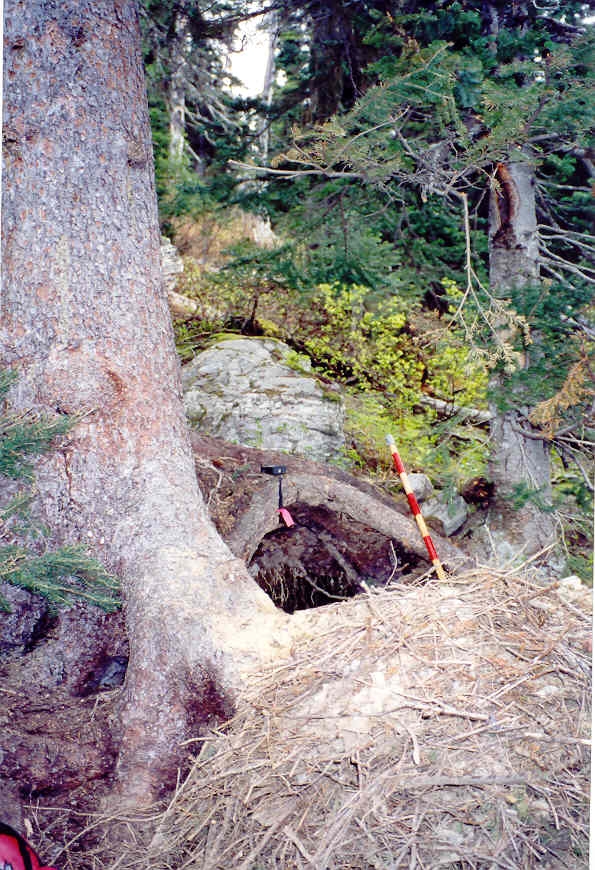
Brown bear_U arctos_Western Canada_hibernation den_L Ciarniello
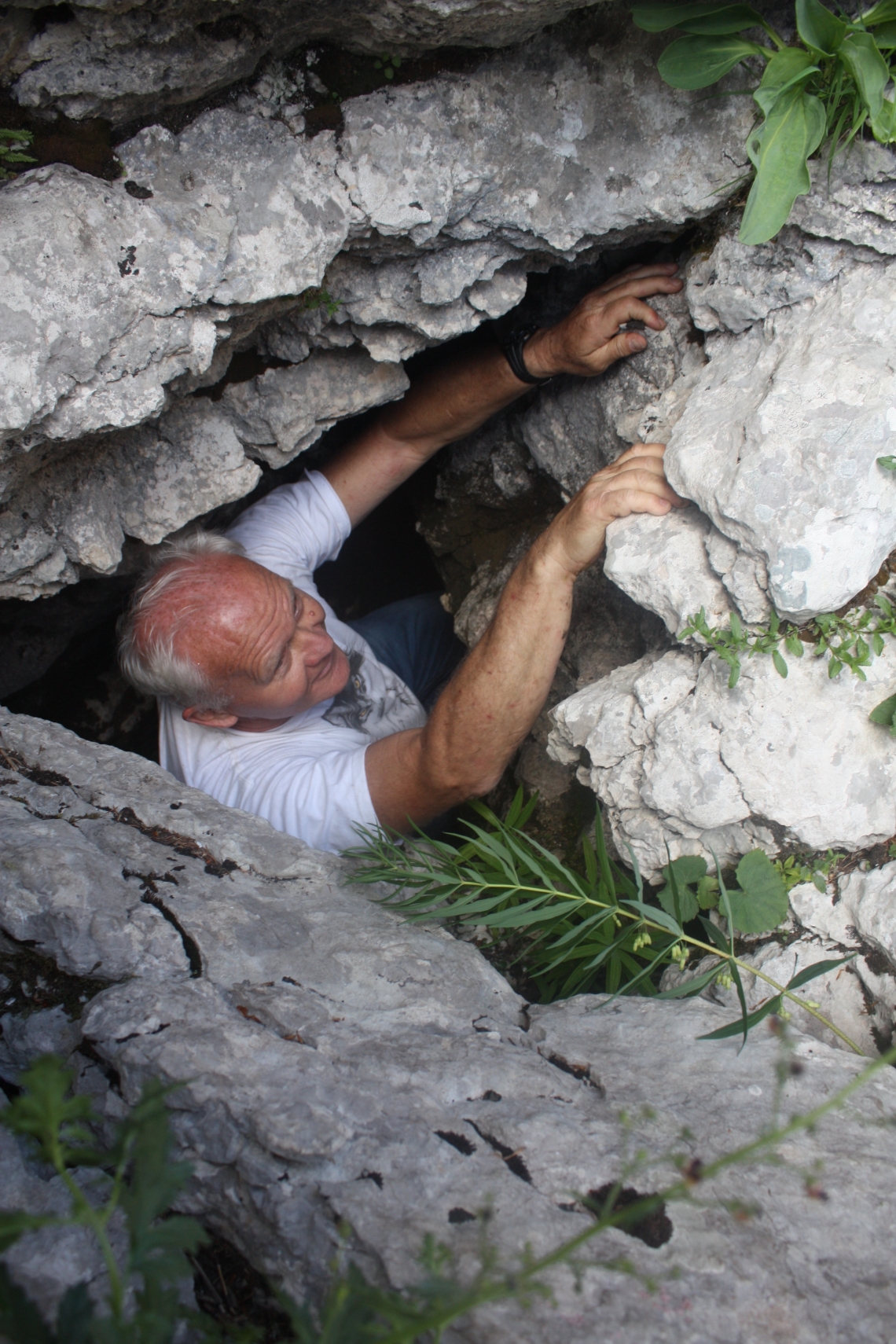
Brown bear_U arctos_Croatia,_researcher exploring a hibernation den_D. Huber
Reproduction: The brown bear mating season typically begins in late-April to mid-May and ends in early July. After the egg is fertilized, cell division continues to the embryonic blastocyst stage but implantation and further development is delayed until late November. This delayed implantation creates a separation between the timing of mating and birthing, enabling bears to concentrate on gaining weight in summer and fall, prior to hibernation. Birthing occurs in late December or January, while the mother is hibernating. The hibernating mother conserves protein and uses stored body fats to nourish cubs. Mammalian fetuses lack the ability to catabolize significant quantities of free fatty acids, but once born, maternal lipid stores are available in milk. Cubs are born small (~1/3 kg) and very immature, but grow to about 5 kg by the time they leave the den in the spring. Litter sizes are typically 1–3, but sometimes 4. In Europe, females generally have their first litter at 4–5 years old, whereas in North America the age of primiparity averages about 6.5 years. In Europe, cubs usually remain with their mother for 1.5 years, whereas in North America, they usually stay for 2.5 years or longer, resulting in a 2-year inter-birth interval in Europe, but a 3-year or longer interval in North American populations. The driving force behind these continental differences in reproduction is not well understood. Less is known of reproduction in Asia, but one brown bear population in Pakistan has the record of being the least prolific bear population, with an average age of first reproduction over 8 years, inter-birth intervals averaging almost 6 years, and litter size averaging just 1.3 cubs.
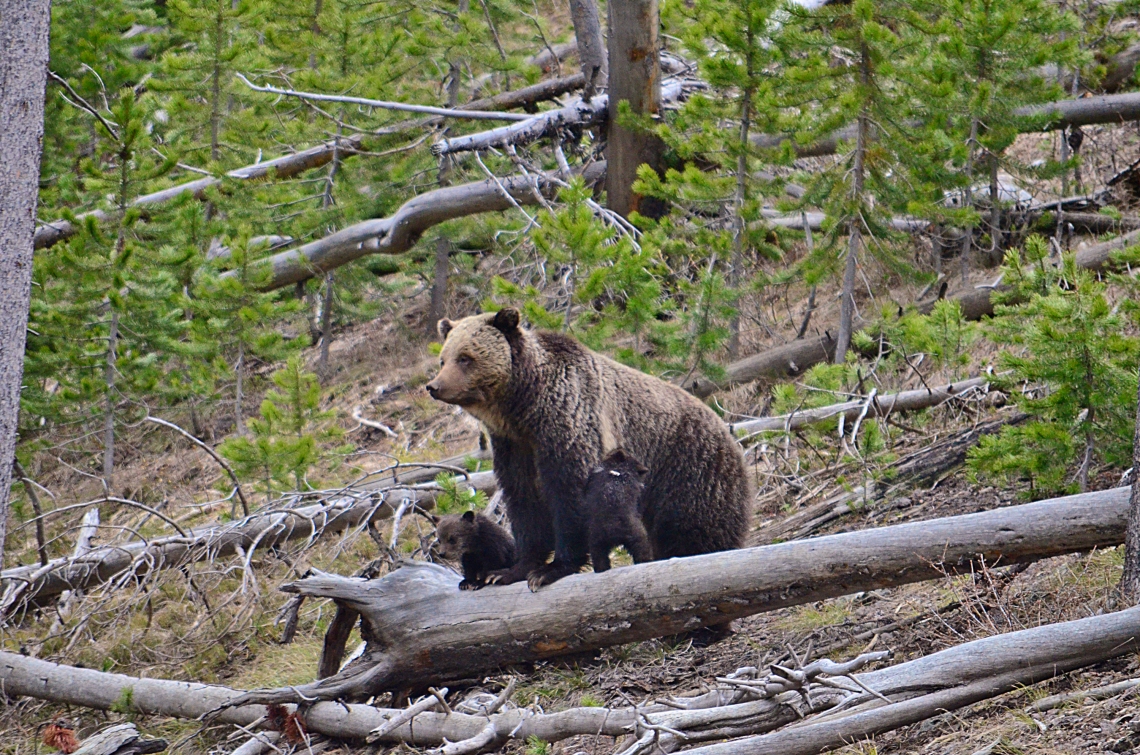
Brown bear_U arctos_ Wyoming USA_mother with cubs of the year_ F vanManen
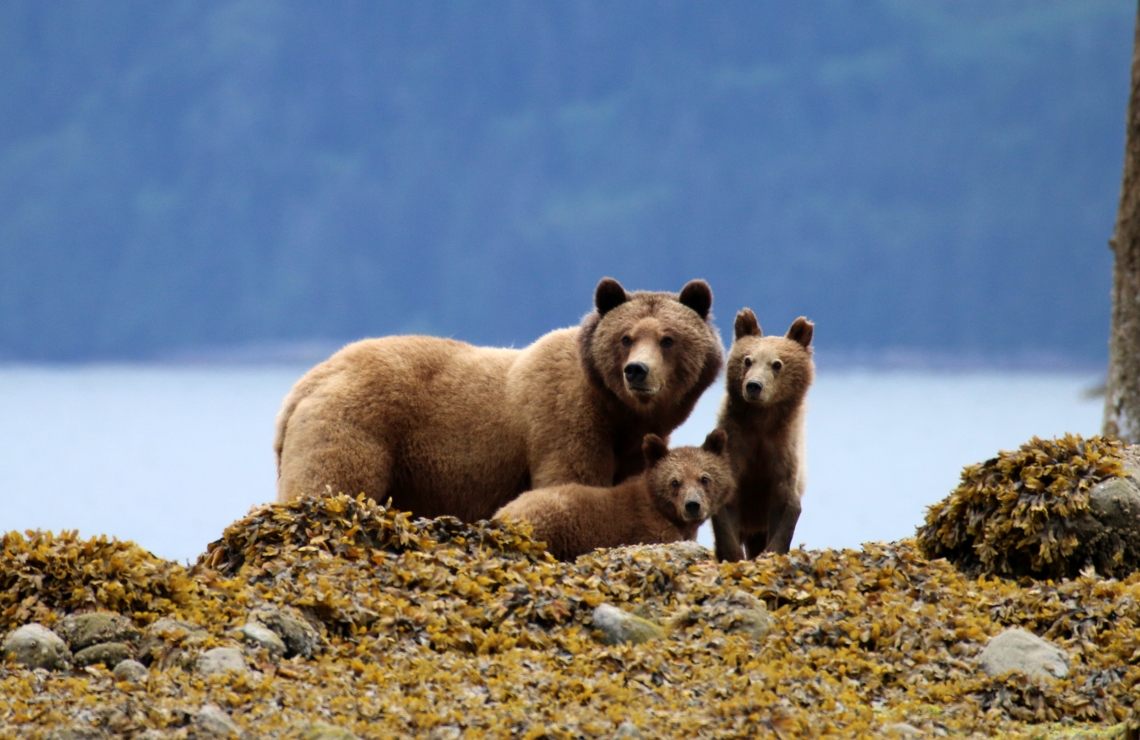
Brown bear_U arctos_British Columbia Canada_with young cubs of the year_MacHutchon
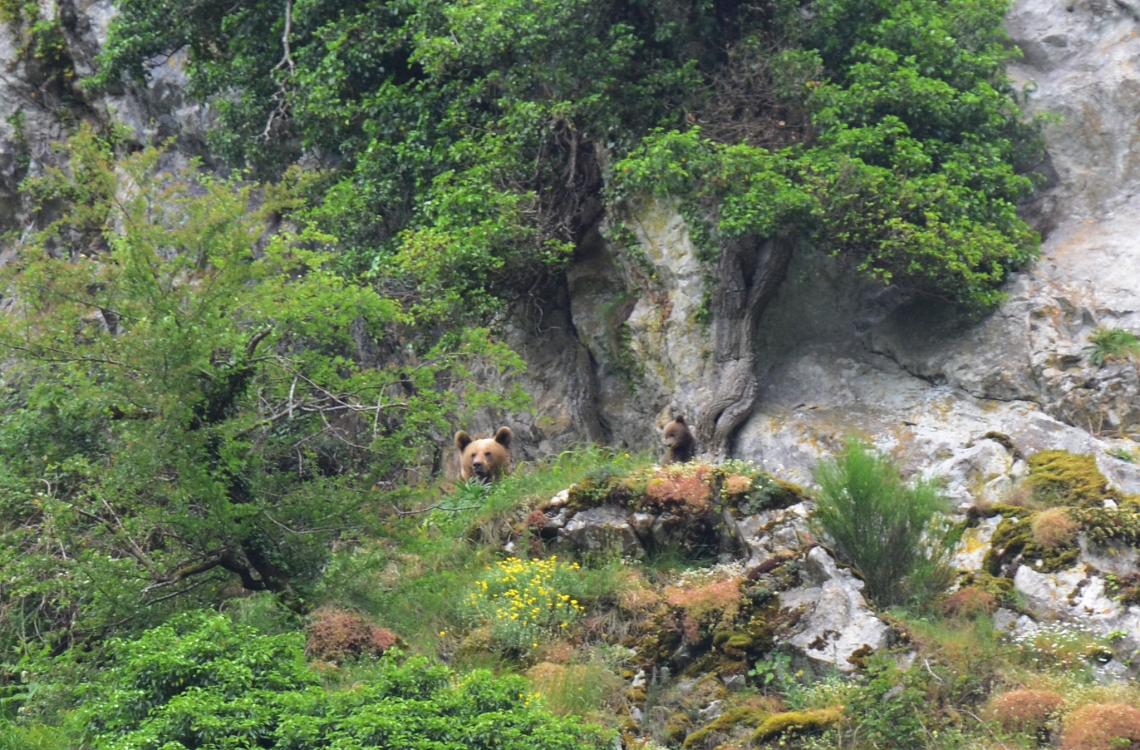
Brown bear_U arctos_Cantabrian Mountains, Spain_female and cub_V Penteriani